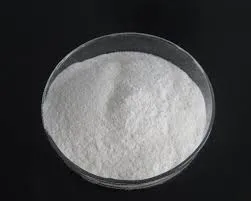
Spa . 31, 2024 01:29 Back to list
cellulose ether
Understanding Cellulose Ethers Properties, Applications, and Significance
Cellulose ethers are a fascinating class of compounds derived from cellulose, one of the most abundant biopolymers on Earth. These ethers are formed by the chemical modification of cellulose through etherification, a process that involves replacing the hydroxyl groups of cellulose with ether groups. The resultant cellulose ethers exhibit a range of properties that make them valuable in various industrial applications.
One of the most notable characteristics of cellulose ethers is their solubility in water and organic solvents, which is influenced by modifications in the cellulose structure. The most common types of cellulose ethers include methylcellulose, hydroxypropyl methylcellulose (HPMC), and carboxymethyl cellulose (CMC). Each of these derivatives offers unique properties that cater to specific applications.
Methylcellulose, for instance, is a non-ionic compound known for its thickening, binding, and emulsifying properties. It is commonly used in the food industry as a food additive and thickening agent. Its ability to form a gel-like structure when heated makes it an excellent ingredient in cooking and baking, especially in gluten-free products. Methylcellulose also contributes to the texture and stability of sauces, puddings, and dressings.
Hydroxypropyl methylcellulose (HPMC) is another widely used cellulose ether, particularly in the pharmaceutical industry. It acts as a controlled-release agent in drug formulations, allowing for a gradual release of active ingredients in the body. Additionally, HPMC is utilized in construction materials as a water-retaining agent, improving workability and durability in cement and plaster mixes.
cellulose ether

Carboxymethyl cellulose (CMC) is a cellulose ether that is particularly valued in the cosmetics and personal care sectors
. It functions as a thickener and stabilizer for various products, including lotions, creams, and shampoos. CMC also plays a crucial role in the oil drilling industry, where it is used in drilling fluids to enhance viscosity and prevent the settling of particles.The versatility of cellulose ethers is further enhanced by their biocompatibility and biodegradability, which align with modern sustainability goals. As industries shift towards eco-friendlier materials and practices, cellulose ethers present a renewable alternative to synthetic polymers.
Furthermore, the market for cellulose ethers has been growing steadily due to their wide range of applications not only in food, pharmaceuticals, and cosmetics but also in textiles, paints, and adhesives. The rise in demand for sustainable and natural products has prompted manufacturers to explore novel cellulose-derived materials, leading to innovations in cellulose ether formulations and applications.
As research continues to uncover new aspects of cellulose ethers, their importance across various industries is likely to grow. From enhancing food products to improving pharmaceutical formulations and supporting sustainable practices, cellulose ethers exemplify how modifications to natural materials can yield significant benefits. Their adaptability and functional properties make them indispensable in our daily lives, and their future looks promising in our ever-evolving marketplace.
In conclusion, cellulose ethers are remarkable derivatives of cellulose that hold immense significance in multiple sectors. Their varying properties tailored for specific applications underline their versatility and importance in advancing both traditional industries and emerging market trends. As we look toward sustainable solutions for the future, cellulose ethers are sure to remain at the forefront of innovation.
-
tile-bonding-additives-for-stronger-bonds
NewsAug.22,2025
-
construction-grade-rdp-for-wholesale-needs
NewsAug.22,2025
-
trusted-wholesale-hec-partners
NewsAug.22,2025
-
hec-solutions-for-industrial-excellence
NewsAug.22,2025
-
construction-additives-need-hpmc-essentials
NewsAug.22,2025
-
hpmc-versatile-cellulose-ether-for-industries
NewsAug.22,2025







